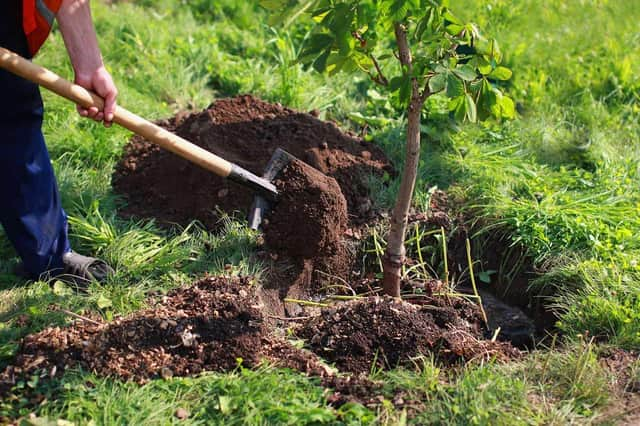Gardening: tree planting and other February tasks


It’s time to give your garden some love in February by giving it a bit of a tidy-up and a quick assessment of any initial winter damage, writes gardening expert Sara Milne.
There will still be frosts and winter weather ahead but at least you can plan and prepare for the spring waiting to arrive.
Advertisement
Hide AdAdvertisement
Hide AdIf one of your gardening new year’s resolutions was to plant a tree then now is the time to do it.
In the coldest months of the year you can buy bare rooted or root balled trees which are cheaper and establish better.
These are trees and shrubs that are lifted straight from the ground and should be planted by the end of February whilst they are still dormant before there are any signs of growth (or by the end of March, possible into April, in the north of Scotland).
Bare root and root balled trees can only be bought when the weather is cold because once it warms up the root ball dries out too quickly unless planted in the ground.
Advertisement
Hide AdAdvertisement
Hide AdBy planting in winter, it means that by spring and early summer trees will have benefited from optimum growing conditions and had the opportunity to establish their root system whilst dormant.
How to plant trees
The key to successful tree planting is to ensure you prepare the site well, first by digging a hole large enough to accommodate the root system.
Avoid planting if the ground is frozen or extremely waterlogged.
Your planting hole should be no deeper than the roots, but at least three times the diameter of the root ball.
Advertisement
Hide AdAdvertisement
Hide AdIt’s a good idea to soak bare rooted trees for about 30 minutes before planting.
Place the tree in the planting hole so the first flare of roots on the stem are level with the soil surface – if you plant the tree too deep it can result in rot and disease.
You may need to also insert a stake for top heavy or larger trees.
Refill the planting hole, firm gently and water in.
Drought stress is common in newly planted trees so make sure you keep watering throughout the growing season. The quantity required will vary with soil type but 30-50 litres per square metre (four to six watering cans) each week in dry weather will do the trick.
Growing your own vegetables
Advertisement
Hide AdAdvertisement
Hide AdIf you are growing your own vegetables, now is a good time to sow lettuce seeds – both under cover and outside.
If you start now it will give you a continuous supply that can be harvested throughout the year.
Sow in modules or fibre pots under cover to have lettuces ready to plant outside in four to six weeks time.
You can also sow outdoors, but use cloches or small poly tunnels until March when the soil has warmed up – they will also provide your lettuce seedlings with protection from birds and slugs.
Advertisement
Hide AdAdvertisement
Hide AdGood varieties to start now include: cut-and-come again Salad Bowl – oak leaved, high yield with green and red varieties; a cos such as Lobjoits Green – dense, crisp heads with self folding leaves; or the small butterhead Tom Thumb – perfect for growing in small spaces, it matures early and has a mild taste.
This February you can prepare for spring and carry out some basic maintenance.
Top three jobs in February: prepare vegetable beds and sow some vegetables under cover, chit potatoes (let them grow shoots) to plant out and prune winter flowering shrubs that have finished flowering.
To read about planting trees and the climate crisis visit:
Comment Guidelines
National World encourages reader discussion on our stories. User feedback, insights and back-and-forth exchanges add a rich layer of context to reporting. Please review our Community Guidelines before commenting.